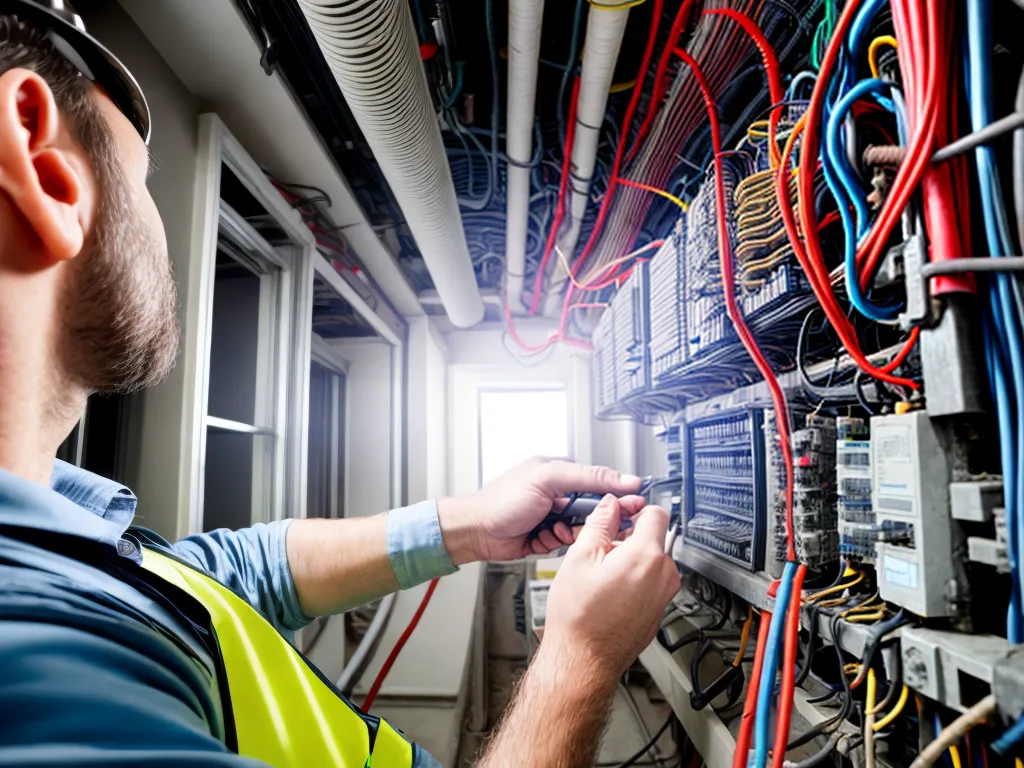
Introduction
As a business owner, I understand the importance of controlling costs and maximizing profits. However, cutting corners on commercial electrical system maintenance can lead to dangerous situations that put employees, customers, and your business at risk. This article provides an in-depth look at strategies to reduce electrical maintenance costs without compromising safety.
Perform Regular Inspections and Preventative Maintenance
Performing regular electrical inspections and preventative maintenance is the best way to avoid emergency electrical repairs down the road. I schedule professional electrical inspections and maintenance every 3-6 months. During these visits, electricians check all electrical panels, wiring, outlets, switches, and equipment. They spot minor issues before they become major, preventing unexpected downtime and expensive repairs. Investing in regular maintenance saves me thousands in emergency electrical costs over time.
Use a Maintenance Checklist
I use a detailed electrical maintenance checklist to track all inspection items, tests performed, and maintenance completed. Tracking this over time provides insight into problem areas. Reviewing the checklist with electricians also ensures no steps get missed. Key items on my electrical maintenance checklist include:
- Inspecting all electrical panels, breakers, and wiring connections
- Testing ground fault circuit interrupters (GFCIs)
- Checking outlet voltage and load balances
- Thermographic inspections for hot spots
- Testing emergency lighting systems
- Checking exterior lighting and signage
Perform In-House Maintenance
While major electrical work requires professional electricians, I save money by handling basic maintenance tasks in-house. My maintenance staff changes burnt out lighting, checks for tripped breakers, ensures exterior lighting works, and visually inspects outlets and panels for problems. I provide staff with electrical safety training and equip them with testing tools and PPE. Clear guidelines identify which tasks require outside electricians.
Install Energy Efficient Lighting
Replacing lighting with LED or CFL bulbs significantly reduces electrical costs over time. While more expensive upfront, high-efficiency lighting uses 75% less energy and lasts 25 times longer than incandescent bulbs. I phase in LEDs as old bulbs burn out. Smart lighting controls like occupancy sensors and timed switches further optimize energy use. The long lifespan of LEDs means fewer costly bulb replacements as well.
Upgrade Old Equipment
Upgrading old electrical equipment prevents failures and improves energy efficiency. I budget annually to replace antiquated breaker panels, old wiring, and outdated power supplies. Prioritizing upgrades based on age and known problem areas optimizes the budget. Check utility company rebates which often offset the cost of upgrading to energy efficient equipment.phase in LEDs as old bulbs burn out. Smart lighting controls like occupancy sensors and timed switches further optimize energy use. The long lifespan of LEDs means fewer costly bulb replacements as well.
Use Power Conditioners
Power conditioners regulate voltage and filter “dirty power” from the utility company before it reaches your electrical system. This eliminates voltage spikes and disruptions that damage equipment and cause failures. While power conditioners are an added cost, I've found the investment pays for itself through greater system reliability and extended equipment lifespan. Less downtime also boosts productivity.
Have Backup Power Plans
Power outages happen, so it’s critical to have backup plans to maintain safety and business continuity. My backup power options include:
- Gas generators for long-term outages
- Uninterruptible power supplies (UPS) keep critical systems running for a short time
- Emergency lighting ensures safe building evacuation
I also have procedures to gracefully shut down certain equipment during an outage to prevent damage. Regularly testing backup systems ensures they work when needed.
Track Energy Usage
Installing energy management systems allows me to monitor real-time electrical demand and identify anomalies indicating wasted energy or developing issues. Energy analytics help pinpoint priorities for upgrades and maintenance. I can also shift non-critical usage to off-peak hours to save on demand charges.
Safety First
While essential to control costs, I never compromise safety to save on electrical maintenance. Only licensed electricians perform high-voltage work. I invest in electrical safety training for staff and provide proper PPE. Following NFPA 70E standards and OSHA requirements ensures my commercial electrical system is safe for occupants. Protecting customers, employees, and my business is the top priority.
Conclusion
Regular maintenance, efficiency improvements, power protection, and safety training allow me to optimize electrical system costs without cutting corners. While requiring some investment, these best practices reduce emergency repairs, utility bills, and downtime. Most importantly, they prevent hazardous electrical situations. Savings are significant in the long run. What strategies do you employ to balance safety and costs with commercial electrical maintenance? Let me know your experiences in the comments.